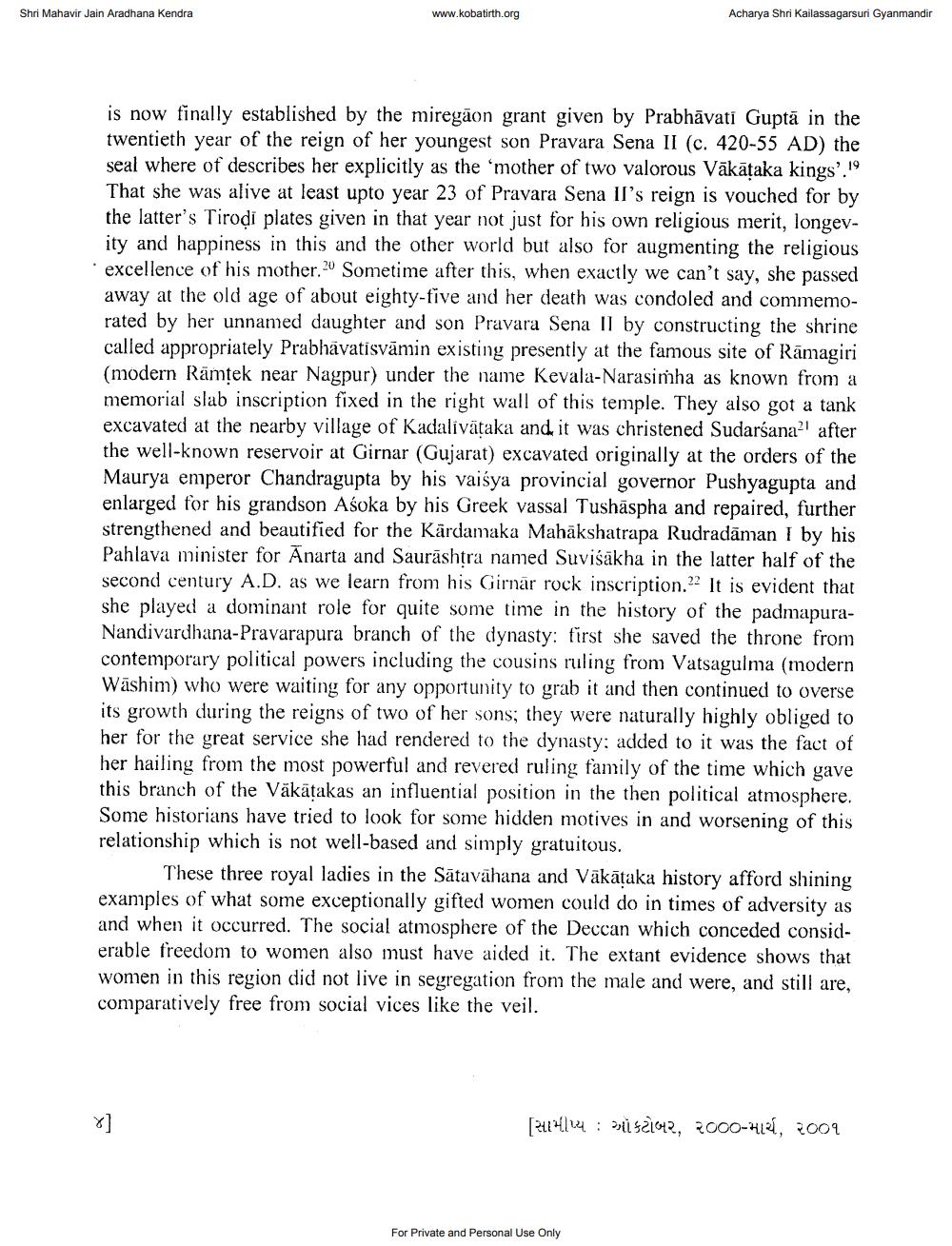________________
Shri Mahavir Jain Aradhana Kendra
www.kobatirth.org
Acharya Shri Kailassagarsuri Gyanmandir
is now finally established by the miregāon grant given by Prabhāvati Guptā in the twentieth year of the reign of her youngest son Pravara Sena II (c. 420-55 AD) the seal where of describes her explicitly as the 'mother of two valorous Vākāțaka kings'.! That she was alive at least upto year 23 of Pravara Sena II's reign is vouched for by the latter's Tirodi plates given in that year not just for his own religious merit, longevity and happiness in this and the other world but also for augmenting the religious excellence of his mother.20 Sometime after this, when exactly we can't say, she passed away at the old age of about eighty-five and her death was condoled and commemorated by her unnamed daughter and son Pravara Sena II by constructing the shrine called appropriately Prabhāvatisvāmin existing presently at the famous site of Rāmagiri (modern Rämtek near Nagpur) under the name Kevala-Narasimha as known from a memorial slab inscription fixed in the right wall of this temple. They also got a tank excavated at the nearby village of Kadalivātaka and it was christened Sudarśana' after the well-known reservoir at Girnar (Gujarat) excavated originally at the orders of the Maurya emperor Chandragupta by his vaiśya provincial governor Pushyagupta and enlarged for his grandson Asoka by bis Greek vassal Tushäspha and repaired, further strengthened and beautified for the Kärdamaka Mahākshatrapa Rudradāman I by his Pahlava minister for Anarta and Saurashtra named Suvisakha in the latter half of the second century A.D. as we learn from his Girnar rock inscription. It is evident that she played a dominant role for quite some time in the history of the padmapuraNandivardhana-Pravarapura branch of the dynasty: first she saved the throne from contemporary political powers including the cousins ruling from Vatsagulma (modern Washim) who were waiting for any opportunity to grab it and then continued to overse its growth during the reigns of two of her sons; they were naturally highly obliged to her for the great service she had rendered to the dynasty: added to it was the fact of her hailing from the most powerful and revered ruling family of the time which gave this branch of the Vakatakas an influential position in the then political atmosphere. Some historians have tried to look for some hidden motives in and worsening of this relationship which is not well-based and simply gratuitous.
These three royal ladies in the Sātavāhana and Vākātaka history afford shining examples of what some exceptionally gifted women could do in times of adversity as and when it occurred. The social atmosphere of the Deccan which conceded considerable freedom to women also must have aided it. The extant evidence shows that women in this region did not live in segregation from the male and were, and still are, comparatively free from social vices like the veil.
RUHI. : L 521042, 2000-HR, 2009
For Private and Personal Use Only




